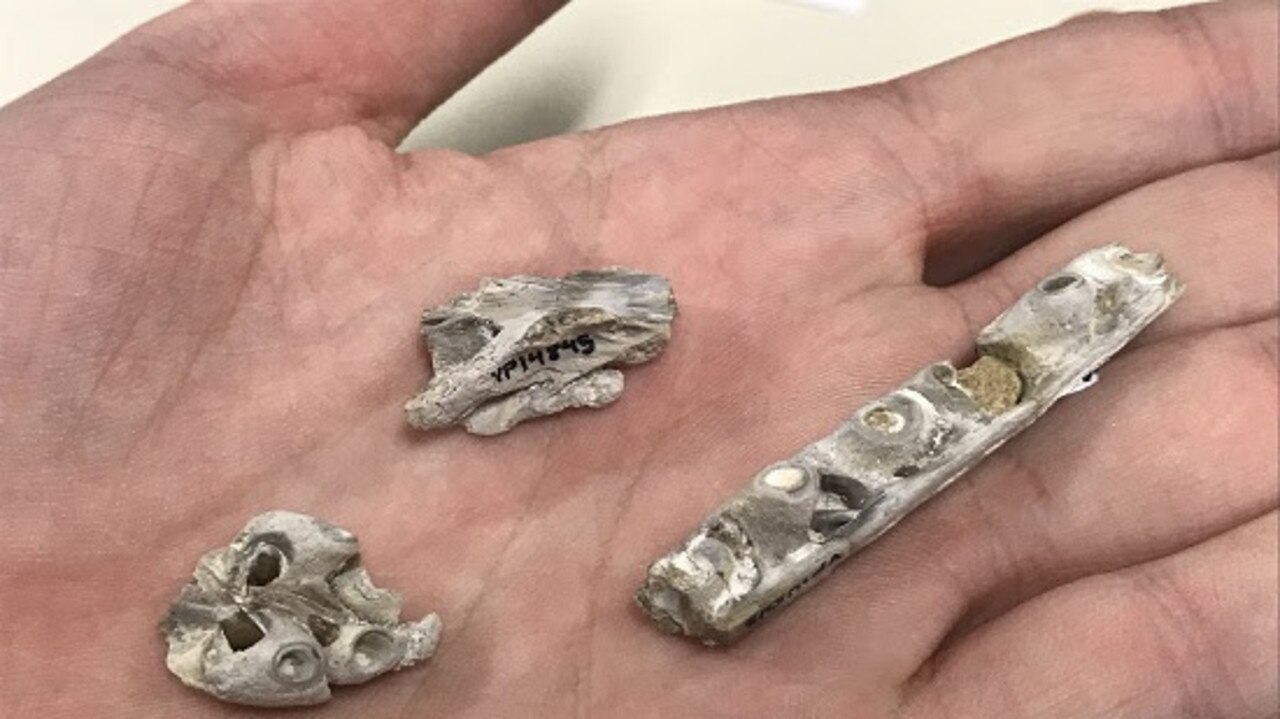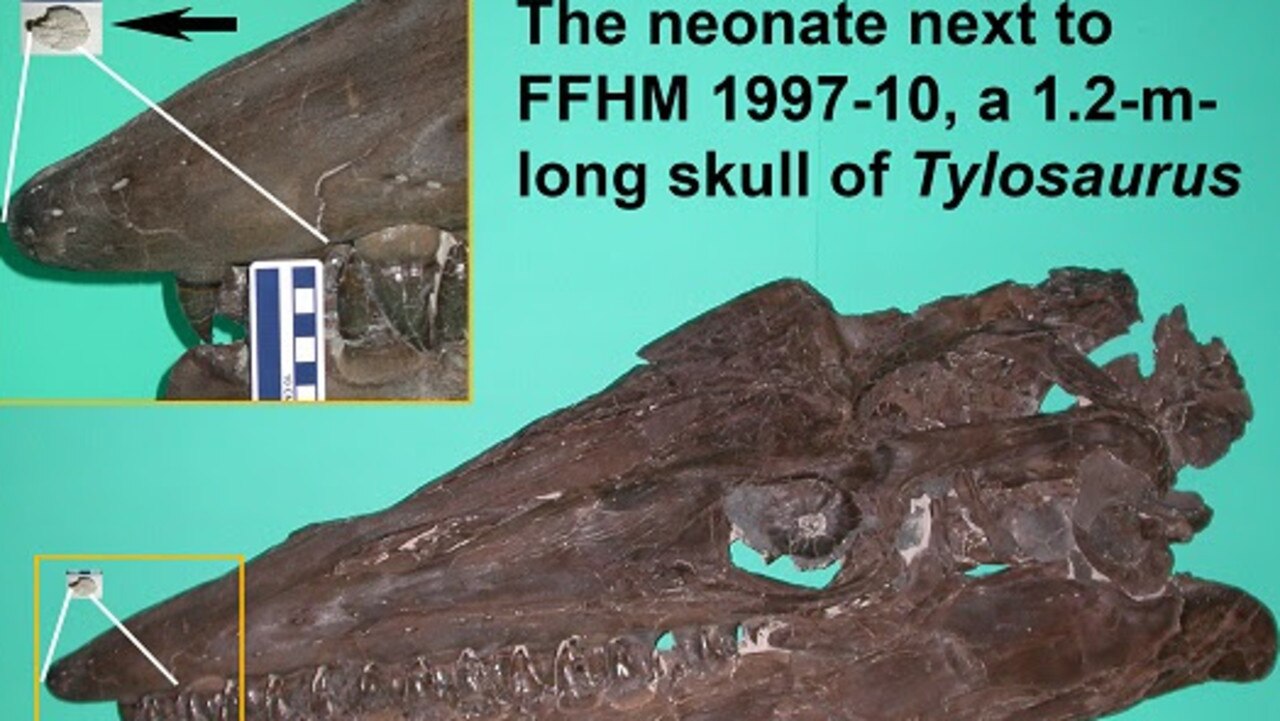Scientists finally crack tiny fossil mystery
FOR more than a decade, scientists thought they knew exactly what these fossils were. But now they’ve realised, they were wrong.
IT HAS taken researchers more than a decade to figure out that tiny fossils uncovered in Kansas, US were actually from a baby tylosaurus mosasaur — a marine lizard dinosaur.
The small bone fragments were discovered back in 1991 and they began to be studied in 2004.
At first, scientists believed the fossils to be from neonate of platecarpus, another type of marine lizard which grew to about 5-6m long, with a short snout. But now, they have determined the bones are in fact from a tylosaurus, a giant 13m mosasaur with a significantly protruding snout.
The fragments found include a partial snout with teeth and tooth bases, partial braincase, and a section of upper jaw with tooth bases.
From this they can estimate the entire baby skull to have been around 30cm long.
The tylosaurus dinosaur belonged to one of the largest-known groups of mosasaurs. Of it’s 13m length as a full-grown adult, the first 1.8m was its head.
Scientists have therefore determined the baby was about a sixth the size of an adult.
Michael Everhart, a Kansas local and a special curator of palaeontology at the Sternberg Museum of Natural History, discovered the tiny specimens in the lower Santonian portion of the Niobrara Chalk. They are now housed at the museum.
Scientists did not realise it was this species because it lacked the trademark long snout feature.

The lack of this snout initially perplexed researchers, but after examining and comparing the fossil to young specimens of other closely related species, researchers finally deemed it to be a young tylosaurus.
“Having looked at the specimen in 2004 for the first time myself, it too took me nearly 10 years to think out of that box and realise what it really was — a baby tylosaurus yet to develop such a snout,” lead author Professor Takuya Konishi, of the Department of Biological Sciences at the University of Cincinnati, said.
“For those 10 years or so, I had believed too that this was a neonate of Platecarpus.”
Researchers now think that the development of this feature happens extremely quickly, between birth and juvenile stage — something that previous studies on the species had failed to notice.
“Yet again, we were challenged to fill our knowledge gap by testing our preconceived notion, which in this case was that tylosaurus must have a pointy snout, a so-called ‘common knowledge’,” Prof Konishi said.
“As individual development and evolutionary history are generally linked, the new revelation hints at the possibility that tylosaurus adults from much older rock units may have been similarly short-snouted, something we can test with future discoveries.”




